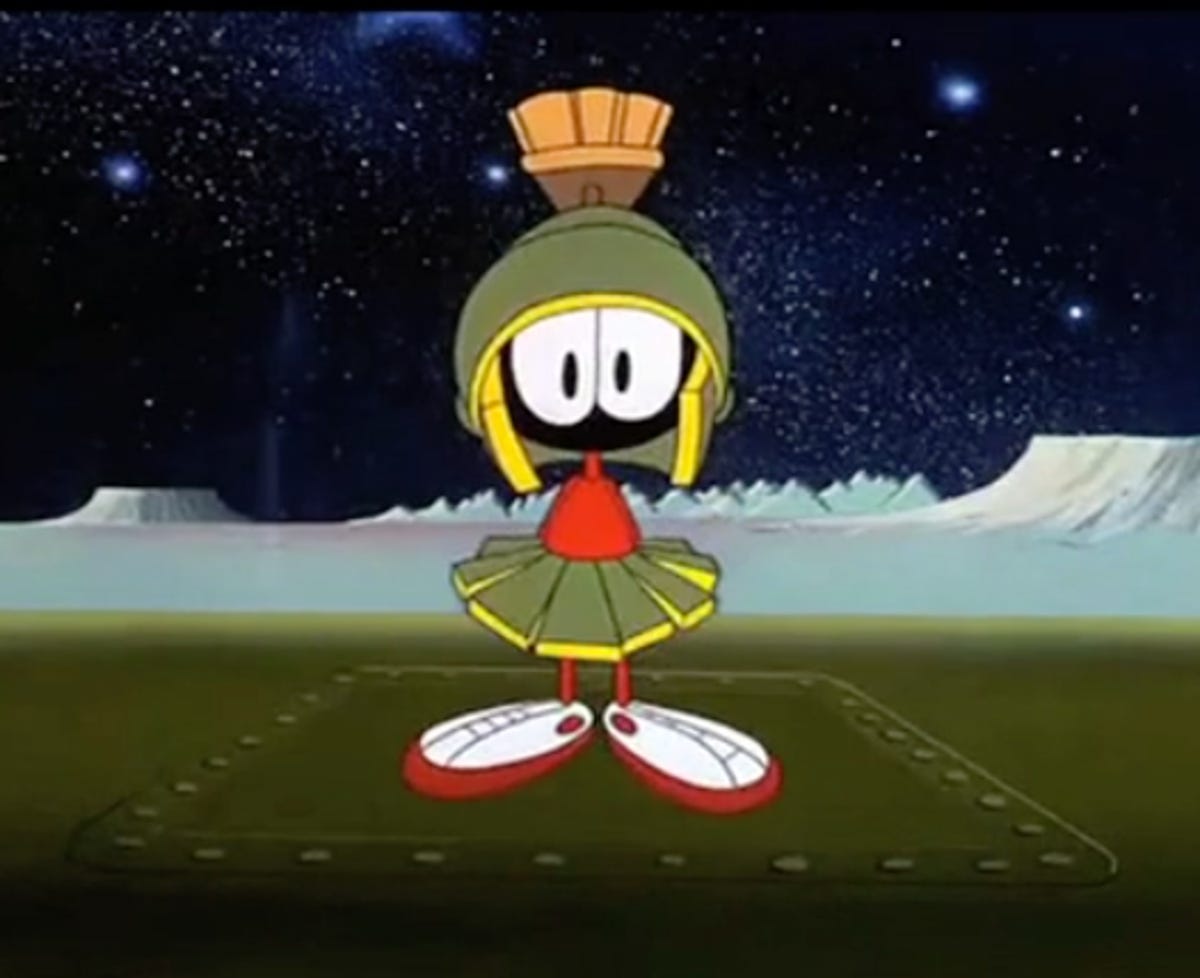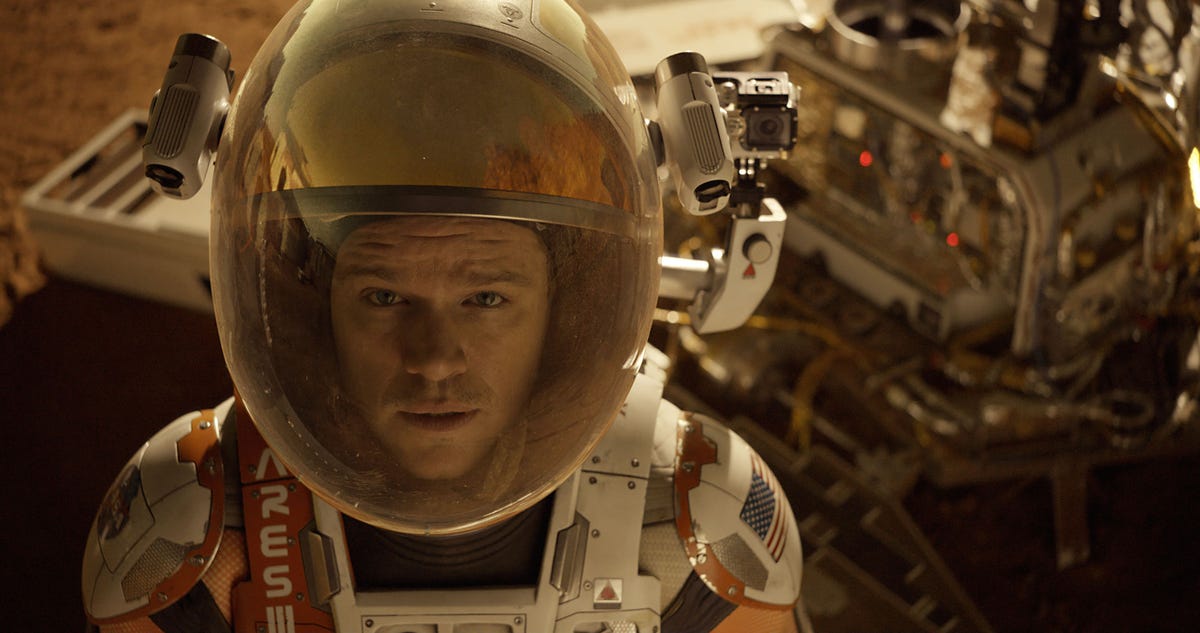The 7 best places to live in the universe (after Earth)
Eventually, humans are going to have to ditch their third rock from the sun. Here's where a NASA scientist says we should go next.

Mankind after Earth
There's a reason why NASA keeps sending robots to other planets and moons in our solar system: Eventually, the theory goes, mankind will want to colonize elsewhere. But where?
Here's a list of the most promising real estate in space, according to Jim Green, planetary science division director at NASA.
His top pick? That cartoon over there to the left should be a pretty big hint ...

Mars FTW
"Mars is no. 1, bar none," Green says.
And not just because Matt Damon is out there waiting for us to join him.
"The thinking used to be that astronauts were going to have bring all their water with them, but there is plenty of water on Mars," Green says. "It's weeping out of craters in the summers; there are aquifers.
"So, no, we've learned we won't need to bring all of our water. We'll bring a straw, because we know where we can go to get it."
Mars: The veggies will be delicious
Another bonus for living on Mars: Easier farming than we thought.
After production on the "Martian" film began, the Mars Curiosity rover revealed fresh details about Martian soil. Turns out, it's more fertile than we thought.
"We didn't know this before we started on the movie, but there are more nitrates and nitrogen in Martian soil than we ever imagined," Green says.
Runner up no. 1: Titan
If Mars is already a little too crowded for you, consider Titan, a moon of Saturn, and the only such body known to have a dense atmosphere.
"It's got an atmosphere mostly nitrogen just like Earth," Green explains.
Shown here is an artist's imagining of a lander on Titan.
Titan: It's no moon?
As moons go, Titan is more planet-like than your typical satellite.
"It's a captured moon of Saturn, and yet it is bigger than Mercury," Green says. "If it were going around the sun, we would call it a planet."
Titan: Pack lots of layers
Titan also happens to have an orbital period of 16 days (compared with Earth's 365) so humans would have some adjusting to do when it comes to the workday. And oh: Temps also average about -179.5 degrees Celsius. So. Bring some sweaters.
Oceanfront property: Europa
"If you're looking for more of an ocean world," Green muses, "it would be Europa."
A moon of Jupiter, Europa is believed by planetary scientists to have lots of water, and it may even be liquid: "The tidal forces from Jupiter could accelerate enough energy on Europa that it would literally melt its ice crust, creating an ocean," Green says.
Europa: Water below
In fact, there may be even more water on Europa than there is here at home; it's just under the crust, Green says.
"If we evolve to breathe water and get our oxygen that way, like fish, we could thrive there," Green says.
Don't write off the moon
Of course location, location, location is always key when seeking out new property. The moon sure is close, and it's a known quantity.
The moon: You could do better
That said, technically, Green says, mankind could do better by looking farther afield.
"The challenge is that it's not habitable like a planet that holds and maintains an atmosphere," Green says.
Then again, humans continue to evolve, and who knows what we'll be capable of in a million years or so?
"If we could evolve to breathe CO2 instead of O2, we could do fine on the moon. We just haven't had the environment to evolve that way; we are what our environment has made us."
Ganymede: It's just huge
Named after the mythical Trojan adonis and cupbearer of the Greek gods, Ganymede, Jupiter's largest moon, is another world with big potential, Green says.
Ganymede: Plenty of room
"It has an under-crust ocean," Green explains. "It also generates its own magnetic field and is the largest moon in the solar system.
"It's an enormous body, bigger than Titan and only slightly smaller than Mars. And it might be able to harbor life. "
Ganymede: Bring a long, long straw
Another bonus: Like Europa, Ganymede may have even more water than Earth...via an internal ocean.
Venus: Just hear us out on this one
With its super-hot temps and gassy atmosphere, Venus may seem like a hellhole. But apparently it could also be ripe for gentrification.
"We know it has a runaway greenhouse effect," Green says. But that's just now.
"If that calms down over time, the whole environment might change significantly," Green says.
Plus: "Consider that there is probably more life below our ground than there is above it; whether Venus could harbor life under its surface is not known. We can only guess."
Ceres: Fascinating landscaping
Ceres is that dwarf planet between Mars and Jupiter, the one with those bright spots that got scientists all excited earlier this year.
It turns out Ceres could also make a nice home for humans one day.
"It has a significant amount of ice on it and even a water zone," Green says. "It's a fabulous body, and if we learn to live and work on the moon, we should easily be able to live and work on Ceres."
Super Earths!
Planetary scientists also like to talk about theoretical bodies -- planets that likely exist, and that might make a good place to visit.
"There is probably a planet out there that is Earth-size," Green muses, "maybe much like Earth and in our local cloud of stars that is very close by -- I mean maybe less than 100 light-years.
"All indications are that it's there. And that it's a super-Earth."